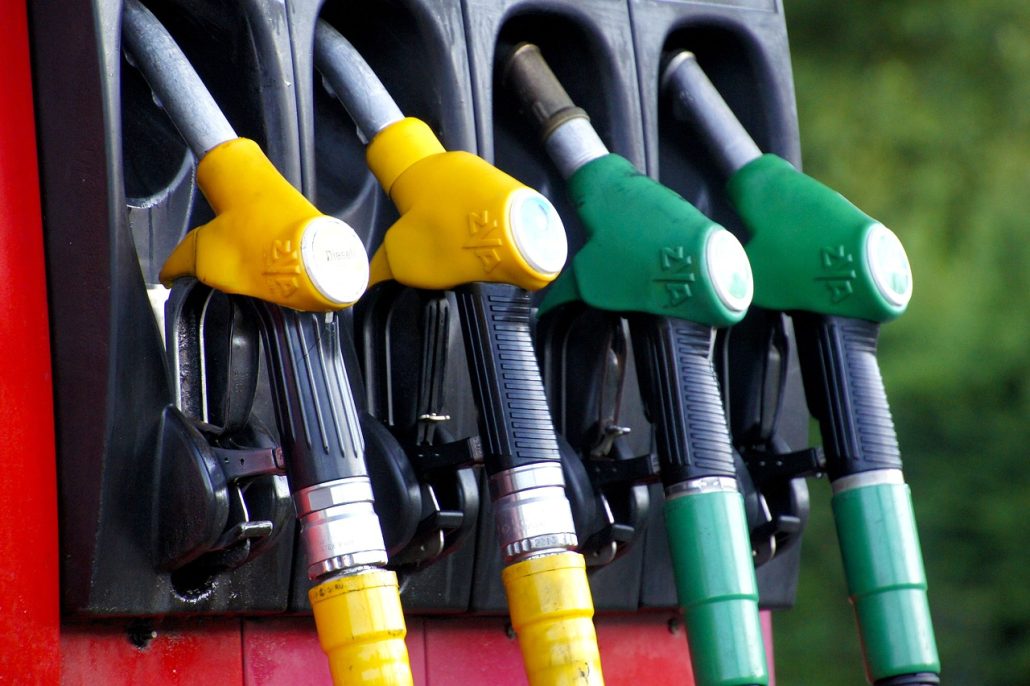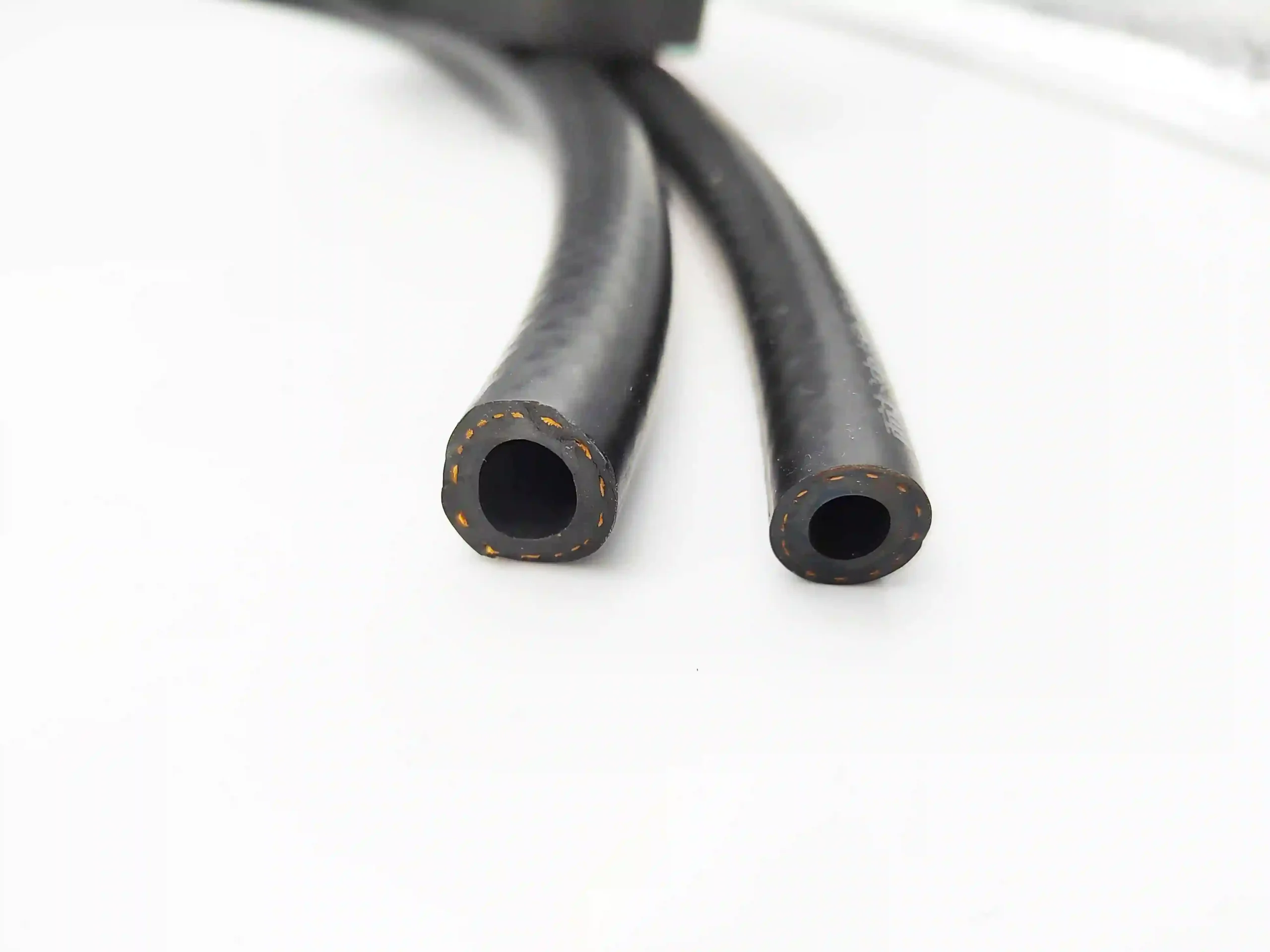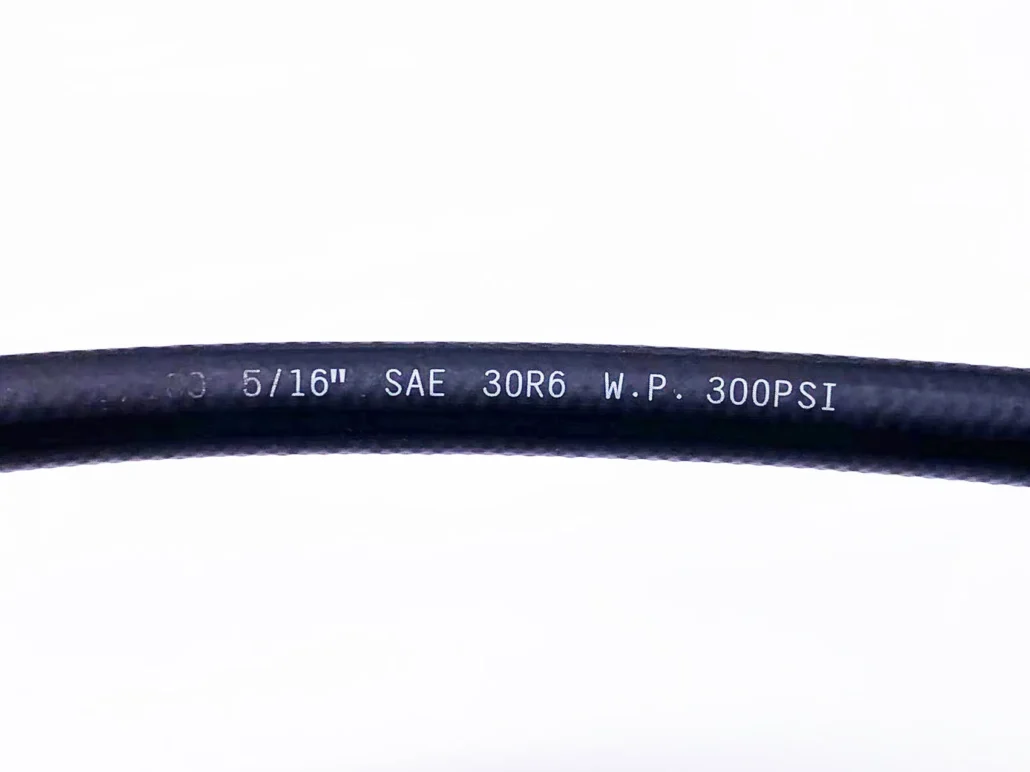Silicone hoses are becoming increasingly popular in the rubber industry. Because they offer improved properties, they replace many rubber hose applications. Silicone hoses are mainly suitable for use in extreme environments. However, our customers often ask whether they can use silicone hoses for fuel transfer.
You can not use a silicone hose as a gas or fuel hose. Although you can transfer other fluids, it is not ideal for petroleum-based fuels. This article will elaborate on this answer in a technical sense. You will learn the exact reason behind this and what other options are. By the end, you’ll clearly understand where silicone shines and where it falls. In this manner, you can make the correct decision regarding your project’s fuel needs.

Is Silicone Hose Fuel Resistant?
Silicone hose is typically not fuel-resistant. Some people think it can handle fuel just fine, but it isn’t. Let’s look at what happens when the fuel is passed through the hose.
Silicone hoses have many advantages, such as flexibility and high wear resistance. You might already be familiar with them. They do well in high temperatures, are flexible, and can easily handle air and water. Many car enthusiasts use silicone hoses for these reasons. But that same heat resistance doesn’t apply to fuel resistance. It’s easy to assume that because they’re durable, they can handle fuel, too. But in reality, this isn’t the case.
So, what happens when you run fuel through a silicone hose? Have you ever observed foam when it comes in contact with water? It absorbs the water and swells and softens. The same thing happens with silicone hoses when they come in contact with fuel. Although the process is slow, it happens in the end. Eventually, these problems become leaks, cracks, or even hose failures.
Silicone hoses lose their elasticity when they come in contact with fuels. Once stretched, the hose reduces flexibility and starts to break down. This can occur quickly, especially when under pressure from a fuel system. In reality, the outer surface of the hose seems to be intact, but inside, it has begun to wear down.
Although it’s slow, it eventually breaks down the silicone hose. That’s why we usually do not recommend silicone hose as a gas or fuel hose.
A silicone hose can transfer other liquids besides petroleum-based fluid. It’s perfect for air and water applications. Silicone is also employed in radiators, coolants, and intake tubes. It can meet heat and pressure requirements in these environments.
Structure of a Silicone Hose at the Molecular Level
From a molecular point of view, silicone consists of units based on siloxane. This is a significant component of silicone rubber, which consists of silicone-oxygen bonds.
This bond makes silicone flexible and heat resistant. This setup enables silicone to be elastic, deform, and heat resistant without degrading. As a result, people find this material an excellent choice for coolant or air hoses.
However, these same properties limit silicone’s resistance. When silicone comes into contact with fuel, its molecular structure begins to weaken. Organic fuel, such as gasoline, is notorious for contaminating this structure. Fuel molecules penetrate the material, diffusing and swelling the silicone, making it more pliable. Unlike water or air, fuel molecules can penetrate silicone more easily. As a result, the cohesion strength between silicone and oxygen is disrupted.
Over time, this penetration increases and goes deep into the hose surface. As a result, your hose begins to absorb fuel. The hose gets larger and softer, and the rubber gradually becomes weaker when used as a hose. These absorptions result in fuel-soaked walls that collapse with time. When the hose is degraded, it is characterized by crackles, leakages, and other failures associated with the silicone hose.
Therefore, silicone hose isn’t built to handle fuel. Prolonged exposure will likely end in a weakened and compromised hose.
Different Options for Fuel Hoses
There are several alternatives. However, you must also consider other factors related to this material. Indeed, some materials remain relevant for quite some time, while others fail under pressure.
Fluorosilicone
If you want to stick with silicone rubber, you can choose fluorosilicone hoses. It offers excellent resistance to fuels and oils. They do not crack at high temperatures; therefore, they are suitable. As a result, people prefer it for many automotive, aerospace, and industrial applications. In the case of durability, this should prove to be a good option.
Nonetheless, fluorosilicone hose is usually more costly than regular silicone hose. It is also unsuitable for dynamic sealing applications and might have poor abrasion resistance. As for brake fluids, amines, or ketones, fluorosilicone is not appropriate.
NBR or Nitrile Rubber
NBR hoses are widely used for fuel applications. They have various fuel grades, like SAE J30 R6. They resist petroleum-based oils and fuels well, and their flexibility is a big plus. They are also cost-effective. However, they may not perform well under extreme temperatures. If you need high resistance and elasticity simultaneously, NBR rubber is available.
One of the biggest problems with NBR rubber is its temperature range. Flurosilicone has a temperature resistance of up to 200 degrees Celsius, while NBR rubber has a temperature resistance of up to 120 degrees Celsius.

PTFE (Teflon)
PTFE is known for its chemical resistance. It can work with many types of fuel and temperatures. If you’re working in a challenging environment, PTFE is worth considering. Although expensive, it is long-lasting, saving you many repair costs.
Nylon Tube
Nylon tubes are light and flexible compared to other materials. They are great for low-pressure fuel applications and have commendable resistance to abrasion. However, they may not be very effective in high-temperature cases. So, know your application before you select a hose.
Stainless Steel Braided Hoses
If you need more strength, stainless steel braided hoses are the way to go. They are suitable for protection against abrasion and are very hard-wearing. These hoses are often used in high-pressure applications. They can be expensive, but you can get what you pay for.
Tips on Choosing the Right Fuel Hose for Your Project
You have already read about some of the most frequently used types of fuel hoses. Below are tips you can follow when selecting the best fuel hose:

Always pay attention to those labels. Most hoses come with a standard letter and number. For instance, the hose designated as SAE J30 R6 type is suitable for fueling. Some hoses may say “oil-resistant” or “chemical-resistant.”
Ensure you take your time to review the manufacturer’s product recommendations. If you are unsure, just address the questions to them. Many suppliers provide compatibility charts. These charts give you a clear view of what material works with fuels, oils, or other specific chemicals.
Last but not least, read the specifications. Look at the working temperature and pressure conditions. Fuel systems can become a source of heat and pressure, particularly in car engines. Also, the inner and outer diameters of the hose need to be discussed. Last but not least, consider the cost of the hose’s performance.
Frequently Asked Questions
What kind of hose is fuel-resistant?
Rubber and thermoplastic are widely prevalent for fuel transfer. But you can not just randomly choose a material for this job. You must know which hose can withstand a variety of fluids and chemicals. Fuels are mostly petroleum-based. NBR, PTFE, and nylon hoses are widely used for fuel-transferring jobs.
Can you use a silicone hose for a gas line?
No, you can not use a standard silicone hose for a gas line. There are several reasons for this, but the most common is that silicone is porous. Furthermore, the ordinary silicone hose can degrade, discolor, or even fracture when it comes in touch with fuel. This could result in fuel leakage, engine mechanical failure, or even worse. If you want a hose for a gas line, you should try NBR or PTFE.
How do I know if my hose is fuel-rated?
Fuel-rated hoses usually have clear labeling. Look closely at the hose or its packaging. If the fuel hose is an SAE standard, you must find the SAE value on it. Check for the letters “J” or “R” and a number. Usually, these letters ensure your hose is “fuel-safe” or “fuel-line approved.” Manufacturers often include a fuel compatibility chart, too.
What silicone is fuel-safe?
While regular silicone is not suitable for fuel transfer, you can still use some special silicone hoses. Fluorosilicone is a specially formulated type of silicone that resists gasoline and oil. However, even this silicone has some limitations. Some fuels and additives can still cause it trouble. Therefore, it is wise to double-check the fuel type and the manufacturer’s specs for the hose.
Summary
Silicone hoses simply aren’t suitable for fuel transfer. They are good for heat, air, and water, but fuel is different. Fuel infiltrates the siloxane bond, making it expand, crack, and fail. Well, then, what are the options for a hose resistant to fuel?
You could also use alternatives like NBR and PTFE instead of regular silicone hoses. However, if you still need to use silicone hoses, you can use fluorosilicone, which can resist gasoline and oil.
When selecting the hose, do not fail to compare the details with those stated by the manufacturer. Don’t just assume a hose is fuel-resistant because it “looks tough.” Fuel compatibility varies even within the same material types. Therefore, if you use the wrong hose, it could mean more than just a quick repair. It may lead to leaks, hazards, or more extensive problems.
Check our product description page if you are looking for a fuel hose. If you have any questions, feel free to contact us.
